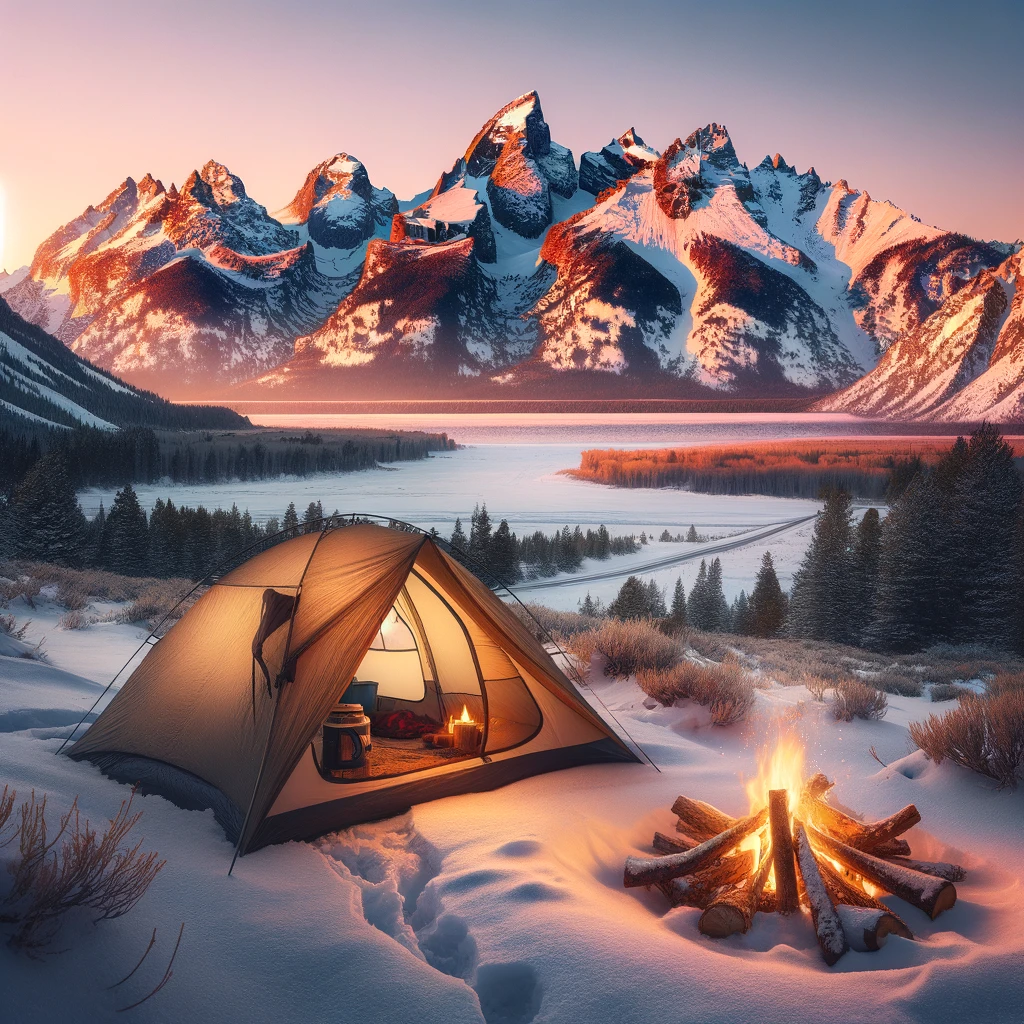Winter camping offers a unique and serene experience but requires thorough preparation, especially regarding your vehicle. A well-prepared vehicle can make the difference between a memorable adventure and a potentially dangerous situation. This comprehensive guide will walk you through the essential steps to winterize your vehicle for cold-weather camping trips.
Essential Vehicle Checks Before Winter Camping
Before embarking on your winter camping journey, thoroughly checking your vehicle’s critical systems is crucial.
Battery Health
Cold temperatures can significantly reduce a battery’s performance. Have your battery tested to ensure it can handle the additional strain of winter conditions. Clean any corrosion from the battery terminals and connections to maintain optimal conductivity.
Tire Preparation
Your tires are your lifeline in snowy and icy conditions. Consider switching to winter tires for optimal traction, or at the very least, ensure your all-season tires have adequate tread depth. Remember to adjust tire pressure according to the manufacturer’s recommendations for cold weather, as tire pressure decreases in lower temperatures.
Fluid Levels and Quality
Check and top up all fluids, paying special attention to your antifreeze concentration. A 50/50 mix of antifreeze and water is typically recommended for most vehicles. Switch to a winter-grade oil that remains fluid in cold temperatures, ensuring proper engine lubrication during cold starts.
Enhancing Vehicle Visibility and Safety
Visibility is paramount in winter conditions for your safety and that of other road users.
Lighting System
Inspect all lights, including headlights, taillights, brake lights, and turn signals. Replace any burnt-out bulbs and clean all light covers to maximize visibility. Consider carrying spare bulbs for emergencies.
Windshield and Wipers
Install winter wiper blades designed to prevent ice and snow buildup. Treat your windshield with a water-repellent coating to improve visibility during snowfall and sleet. Ensure your windshield washer fluid contains antifreeze properties to prevent freezing.
Winterizing Your Vehicle’s Interior
Creating a comfortable and warm interior environment is essential for winter camping.
Insulation Techniques
Use Reflectix or similar reflective insulation to cover windows, reducing heat loss and preventing frost buildup. Install thermal curtains for additional insulation and privacy. These measures keep you warmer and help conserve battery power if you’re using electric heating methods.
Moisture Management
Condensation can be a significant issue in winter camping. Use moisture-absorbing products like silica gel packets or activated charcoal to reduce humidity inside the vehicle. Proper ventilation is critical – crack a window slightly to allow air circulation and prevent excessive moisture buildup.
Emergency Preparedness for Winter Camping
Being prepared for emergencies is crucial when winter camping. Create a comprehensive winter camping emergency plan that includes vehicle-specific considerations.
Winter Emergency Kit
Pack a winter emergency kit including items such as:
- Shovel.
- Ice scraper and brush.
- Jumper cables.
- Flashlight with extra batteries.
- First aid kit.
- Blankets or sleeping bags.
- Non-perishable food and water.
- Hand warmers.
Vehicle Recovery Tools
Include traction mats or sand to help you get unstuck from snow or ice. A tow strap is also essential, but make sure you know how to use it properly to avoid vehicle damage.
Optimizing Your Vehicle for Sleeping
Creating a comfortable sleeping area is essential if you plan to sleep in your vehicle.
Bed Setup
Choose a sleeping platform that maximizes space and comfort. This could be as simple as folding down rear seats or as complex as a custom-built platform. Insulate the sleeping area from cold metal surfaces using foam padding or insulation materials.
Heating Solutions
If using a portable heater, ensure it’s designed for indoor use and has proper safety features like automatic shut-off. Always maintain adequate ventilation to prevent carbon monoxide buildup.
Advanced Winter Camping Vehicle Modifications
For serious winter campers, consider these advanced modifications:
Auxiliary Power Systems
Install a dual battery system to power camping accessories without draining your vehicle’s main battery. Solar panels can be a great addition, even in winter, to help maintain battery charge during daylight hours.
Upgraded Suspension
A lift kit can provide additional ground clearance for navigating deep snow. Pair this with appropriate shocks designed for cold weather performance to improve handling and comfort on winter roads.
Winter Driving Techniques for Campers
Adapt your driving habits for winter conditions. Accelerate and brake gently, increase following distances, and be prepared for reduced traction. If your vehicle has 4WD or AWD, familiarize yourself with how to engage and use these systems effectively in snow and ice.
Post-Trip Vehicle Care
After your winter camping trip, wash your vehicle thoroughly to remove road salt and grime that can cause corrosion. Inspect your vehicle for any damage or wear caused by winter conditions and address issues promptly.
Conclusion
Proper vehicle preparation is essential for safe and enjoyable winter camping adventures. By following this guide and staying informed about winter camping safety, you’ll be well-equipped to handle the challenges of cold weather camping.

Leave a Reply